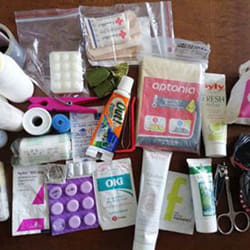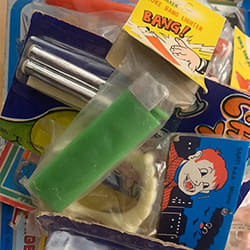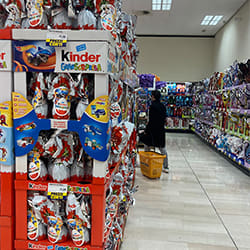
A new environmental movement has been steadily gaining traction since around 2020—the collection of biological waste products.
One really convenient thing about living in Portugal is the Ecoponto system. Ecoponto are basically garbage collection points with bins for all kinds of different waste, so you can toss everything in one go.
Gray or black bins are for burnable garbage. Blue is for paper. Green is for glass bottles and cans. Yellow is for plastic. Little red containers are for batteries. Most Ecoponto spots have these five types, and some locations even have additional containers for used oil, pharmaceuticals, corks, plastic bottles, and plastic bottle caps.

Gray is for regular garbage, green is for glass bottles, blue is for paper, and yellow is for plastic

These smaller aboveground bins have big underground pits attached to them.

Left: Used oil Right: Used clothes, shoes, and bags (these are sent to poorer countries)

There are even bins for biological waste products. They don’t open unless you insert a special card at the arrow, to ensure that nothing else gets put into them.
In Japan, each type of garbage is collected on specific days of the week, and it’s always early in the morning. Putting it out the night before is too far in advance, and you’re not allowed to put it out after collection. You have to conform to the trucks’ schedule.
If you end up sleeping in on trash day, you have to check the pickup spot from your window when you get up. If it hasn’t been picked up yet, you then have to run out of your house with your garbage in hand—eye crust, bedhead, pajamas, and all. At least that’s what ends up happening to me over and over when I go back to Japan to visit.

A recycling booth near a supermarket. The supermarket issues a point card that you can use in the store based on the amount of plastic bottles and other things that you recycle here.
Thanks to the Ecoponto locations in Portugal, you can toss your garbage whenever you want and it doesn’t have to pile up in your house. It’s a lifesaver.
A new type of garbage that they’ve been collecting lately is biological waste products—which basically means kitchen scraps.
Everyone gets a brown bin and lime green plastic bags to collect their kitchen scraps. When the bin is about three-quarters full, you pull out the bag, tie it up, and take it to the collection area.
The distinctive lime green bags really stand out and can be detected by machines at the waste processing facility. The fully-automatic system then sends them to a special processing plant.

Brown bin and lime green bags
The leftover food we throw away can have serious negative impacts on people and the environment. If it accumulates in landfills improperly, it can produce methane gas leachate that contaminates our underground water supply.
But if these organic waste products are properly sorted and processed, we can not only prevent environmental pollution, but also create something extremely valuable. The waste can be used to generate electricity or be returned to the soil in the form of nutrient-rich compounds.
Portugal has defined managing biological waste products as an essential part of minimizing waste, protecting the environment, and encouraging the efficient use of resources. So in 2023, it began mandating that biological waste be collected separately.

People currently generate an average of 200 kilograms of food waste (leftover food) per year in Portugal. At this rate, the waste from one household can generate enough electricity to power a flat-screen TV for three months.
It was a relief to learn that the waste I’m creating can be used in this way, but it also makes me conscious of generating as little garbage as possible.
Of course in our house, we give the leftover fruits and vegetables to our livestock!




























































